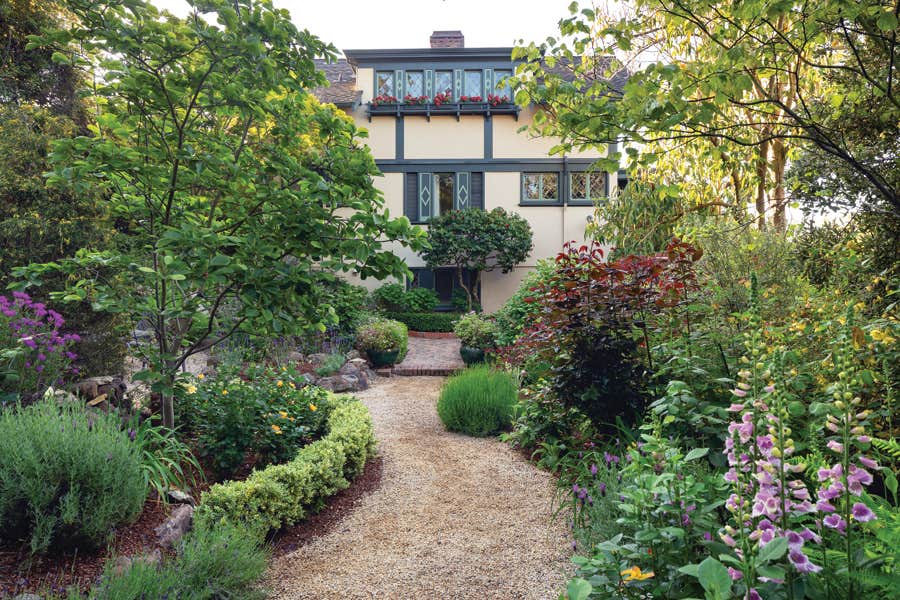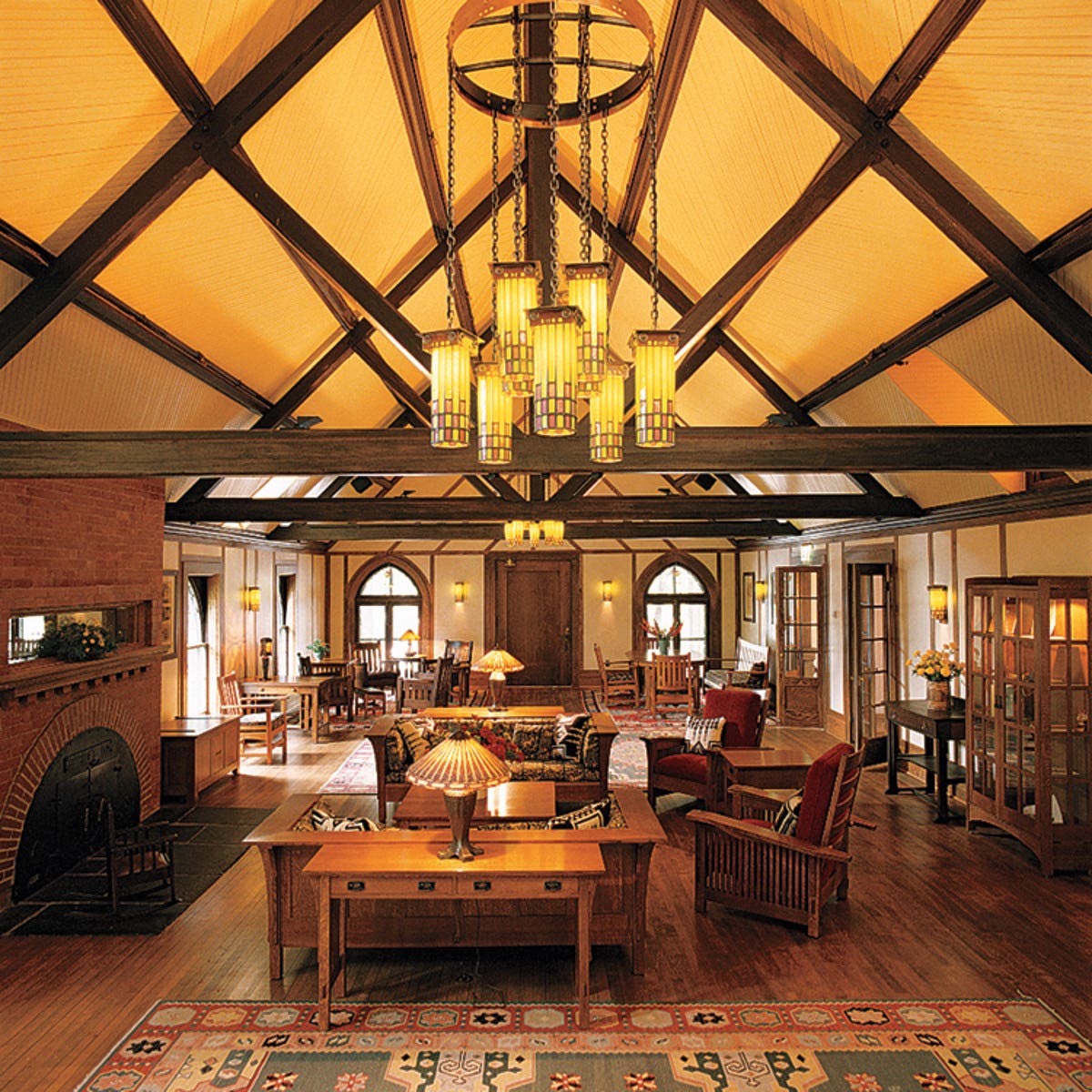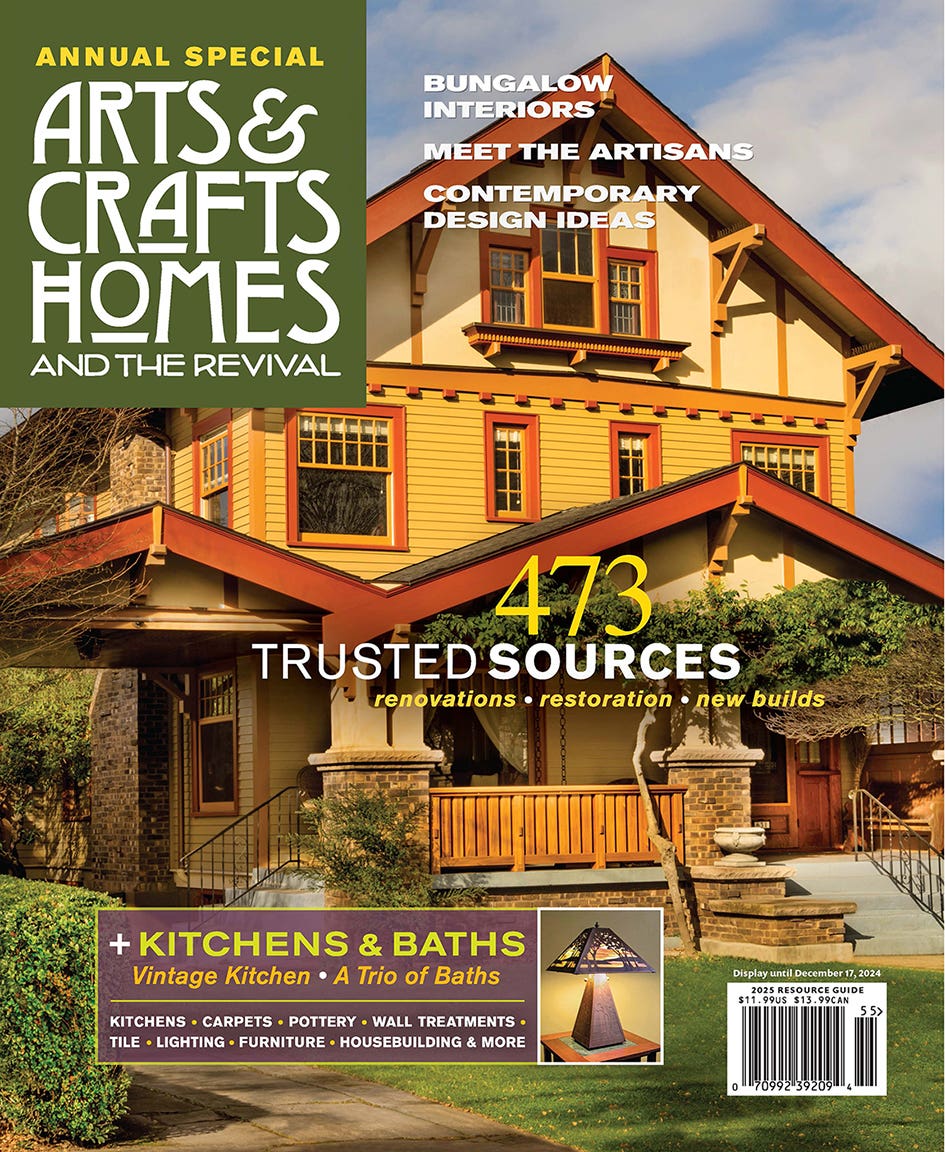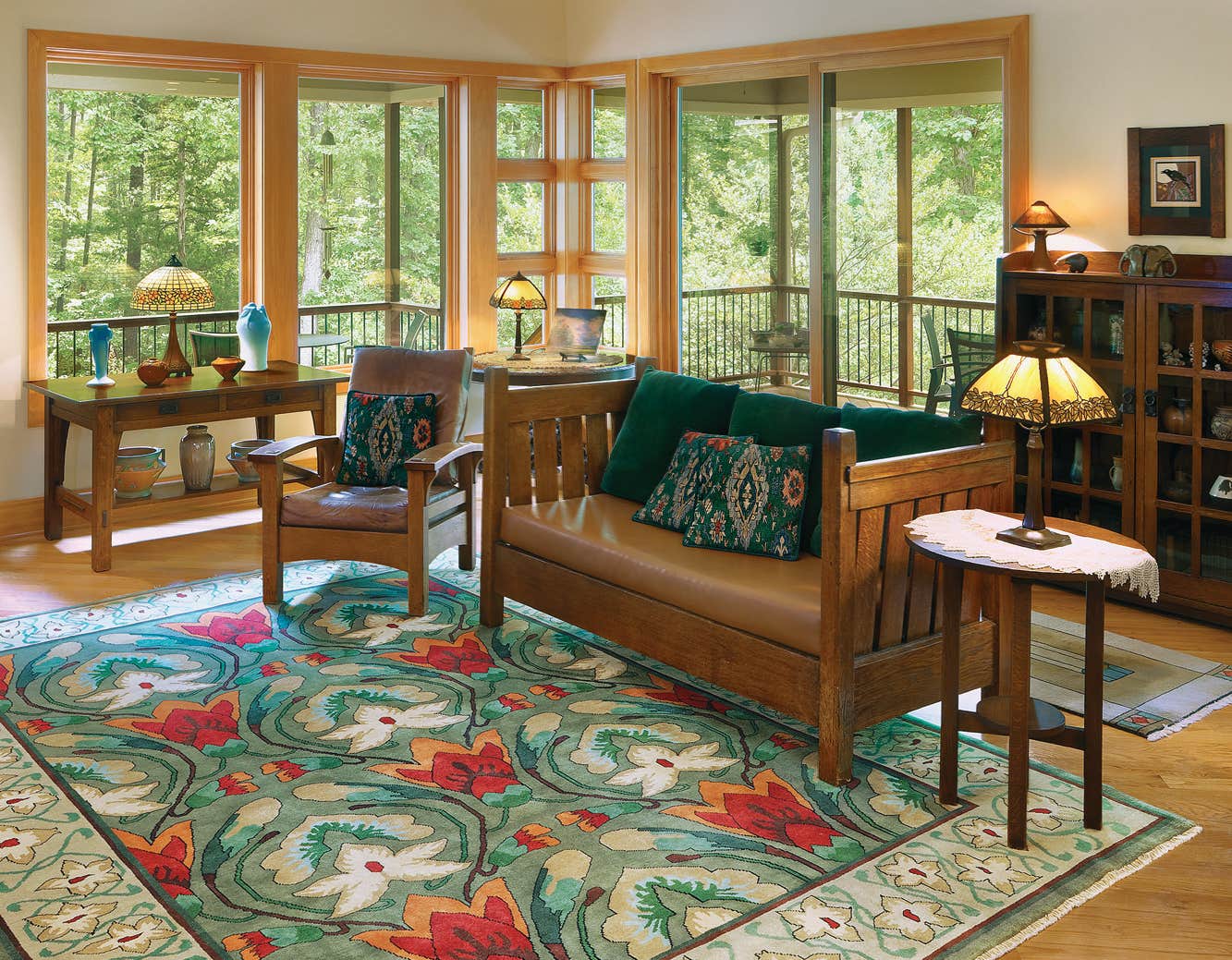The Craftsman Home 1902–1930
The word “Craftsman” has long been used to mean a style—somewhat synonymous with “American Arts and Crafts.” A more accurate definition is that a Craftsman Home is one built according to plans published by Gustav Stickley.
It’s almost general knowledge these days that Gustav Stickley’s Craftsman Workshops made Mission Oak furniture (a.k.a. American Arts and Crafts furniture). Not as well known is that, beginning in 1904, Stickley (and hired pens) designed houses and offered blueprints that readers could order.
In his magazine The Craftsman and in book-size compilations, Stickley showed plans and renderings with advice on appropriate colors, textiles, and furniture (from his workshops, of course). The houses were embraced by the top of the planbook market; their cost to build was above average and customizing was prevalent. Some lovingly rendered motifs—hand-wrought copper hoods and extensive built-ins, for example—never made it into construction, for reasons of taste or budget.
As early as 1902, Stickley had advocated good home design that integrated Craftsman furniture. In 1904, he began to offer plans to subscribers, maintaining a design service to comply with requests for modifications and custom homes. Stickley, self-taught as an architect, signed the plans and probably did create some of them. He employed the talented Harvey Ellis, whose work was influenced by English architects Baillie Scott and Voysey. After Ellis’s tragic early death, Stickley relied on unnamed in-house designers; he also contracted with various architects and draughtsmen, including the New York City-based architect George R. Nichols.
The plan service was reinvigorated in 1909, when house designs began to feature products sold by Stickley’s advertisers. Most are still household names: Ludowici-Celadon Tile, Tapestry Brick, Grueby Tiles, Sanitas Wallcoverings, Dutch Boy Paints.
In June of 1915, with Stickley and his Craftsman empire in debt and facing bankruptcy, the publication of house plans ceased, temporarily reappearing a year later. The final issue of The Craftsman, in December of 1916, had only one plan, for a small bungalow.
No one has ventured a guess on how many Stickley houses were built, but we do know they exist around the country, and “from Alaska to Fiji.” In an ambitious and huge 2006 book, longtime sleuth and Craftsman Home-owner Ray Stubblebine documented the published plans and shares the houses he’s tracked down, in their original or not-so-original states. Ray points out that the designs were not avant-garde but “democratic,” meant for the middle class, whether they looked like pioneer cabins or houses for suburban lots. A few are awkward, even ugly. Most, however, are undeniably appealing.
Patricia Poore is Editor-in-chief of Old House Journal and Arts & Crafts Homes, as well as editorial director at Active Interest Media’s Home Group, overseeing New Old House, Traditional Building, and special-interest publications.
Poore joined Old House Journal when it was a Brooklyn-brownstoner newsletter in the late 1970s. She became owner and publisher and, except for the years 2002–2013, has been its editor. Poore founded the magazines Old-House Interiors (1995–2013) and Early Homes (2004–2017); their content is now available online and folded into Old-House Journal’s wider coverage. Poore also created GARBAGE magazine (1989–1994), the first unaffiliated environmental consumer magazine.
Poore has participated, hands-on, in several restorations, including her own homes: a 1911 brownstone in Park Slope, Brooklyn, and a 1904 Tudor–Shingle Style house in Gloucester, Massachusetts, where she brought up her boys and their wonderful dogs.








